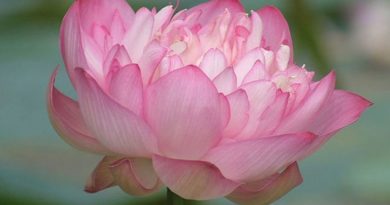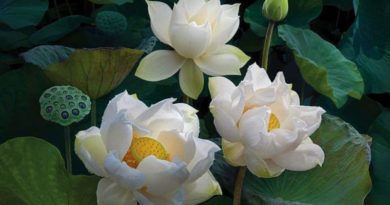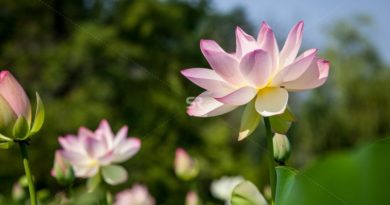A TALK OF KAMMA, REBIRTH AND SUFFERING
A TALK OF KAMMA, REBIRTH AND SUFFERING
Given by
the Venerable Sayadaw U Silanandabhivamsa,
Rector Sayadaw
The International Theravada Buddhist Missionary University at 9:30 a.m. on the 13th March, 1999
As Requested by the Members of the Young Presidents’ Organization of the United States
I was requested to give a talk to explain to you the Buddhist Law of Kamma, Rebirth and the Buddha’s Teaching of Suffering. All these teachings are interesting not only for Buddhists but for non-Buddhists as well. Now, I am a Theravada Buddhist monk and so when I talk about Theravada Buddhism, I prefer to use Pali words to Sanskrit words that are more popular with the Western people. It is because Pali is the language in which the original teachings of the Buddha were preserved and recorded. Therefore, it has become the sacred language of the Theravada Buddhists.
Kamma
The word kamma — k-a-m-m-a — is a Pali word. It is the same word as k-a-r-m-a in Sanskrit. By the way, since it is a Sanskrit word, you have to pronounce the ‘r’ in this word distinctly as you do in Spanish, and not as you normally do in the U.S.
Now, what is kamma? The literal meaning of the word kamma is “something that is done” or a “deed”. It also means a mental state that is instrumental in doing the deed, good or bad, wholesome or unwholesome. So, technically, kamma means the mental state which arises in the mind when people do some deed. Whenever there is a deed good or bad, there arises in the mind this mental state, and this mental state organizes the other associated mental states and also engages itself to the object. So, that mental state is like a chief pupil in a class who studies himself and also encourages other pupils to study. In the same way that mental state acts upon the object itself and also encourages or organizes the other mental states arising together with it to act on the object. That mental state is called “cetana” in Pali, and it is translated as “volition”. So what we call kamma is not actually the deed, good or bad, but that mental state that accompanies or that arises in the mind of a person who does the good or bad, or wholesome or unwholesome deed.
And as a mental state, it arises and disappears immediately, because according to the teachings of the Buddha, whether it is a mental state or a material state, it arises and immediately it disappears. But unlike other mental states, when it disappears it leaves some potential to give results in the mental continuum of beings. Although we cannot say or we cannot know where this potential is stored, but when conditions are favorable for that kamma to give results, the results are produced. Let’s take an example of a mango tree that bears fruits. Before the fruits are on the tree, we cannot say where the fruits are stored, whether in the rots, or in the trunk, or in the branches, or in the leaves. But when the conditions come together — like sunshine, moisture and water — the fruits are produced. In the same way the kamma which has the potential to give results gives results when the conditions are favorable for it. That is what we call kamma. And this kamma as you know can be good or bad, or can be wholesome or unwholesome. Since it is a natural law that kamma gives results, it follows that when kamma is good, then it will produce good or happy results, and when the kamma is bad or unwholesome, it will produce bad or painful results. This is what we call the Law of Kamma; that there is what we call kamma (or volition) and this kamma gives results in the future. So we Buddhists all believe in this Law of Kamma.
Discovery of the Law of Kamma
And this Law of Kamma was discovered by the Buddha himself without a teacher. On the night before He became the Buddha, the Bodhisatta sat down under the Bodhi tree and practiced meditation for the whole night. During the middle watch of the night — in modern terms, between 10 p.m. and 2 a.m. — Buddha attained the supernormal knowledge by which He was able to see beings dying from existence and being born in the next existence. He also saw that a being died from one existence and was reborn in a miserable existence because he, the being, did bad kamma in the past, and another being dies from one existence and was reborn in a blissful state as a human being or a celestial being because he did wholesome kamma in the past.
So during that time or during that watch of the night, Buddha discovered the Law of Kamma. Therefore Buddha’s teaching of the Law of Kamma was not borrowed from any other teaching, but it came from His own intuitive knowledge or superwisdom. It is also said (in our books) that only the Buddha could understand everything about kamma; it is not in the province of even the best of His disciples to understand kamma in all its entirety. So if we do not know everything about kamma, we should not be disappointed because it is not in our own province to know everything about it.
Different kinds of kamma
There are different kinds of kamma. There is kamma which gives results in this very life, there is another kind of kamma which gives results in the next future life, and there is yet another kamma which gives results from the third life indefinitely until one gets out of the rounds of rebirths. The three kinds of kamma become defunct when they do not get the opportunity to give results in their allotted periods of time. So kamma gives results not only in future lies, but it can give results in this very life also.
There are some people who said that they got results of the kamma in this very life. There is a Myanmar lady in Florida whose daughter was married to an American, a neurosurgeon. On her one birthday, her son-in-law gave her a Mercedes as a birthday present. She was surprised because on her own she could never hope to own a Mercedes. She told me that she got that Mercedes as a present because she did something or she had been doing something good in her life. And that was that she was providing transportation to an elderly couple who could not drive. She took them once a week to grocery stores and helped them in their shopping, and then took them back to their home. She donated transportation to the couple for man years and she believed that as a result of the good kamma she did in this life, she got the result also in this life. And I hope you can think of the negative or bad kamma giving bad results in this life.
Understanding of the Law of Kamma
This understanding of the Law of Kamma taught us self-reliance and self-responsibility, because we enjoy or suffer as a result of what kamma we did in the past. So whatever you enjoy in this life is actually the result of good kamma you did in the past. And whatever you suffer here is also the result of bad kamma you did in the past. So we are not to blame anybody else for our suffering or failure in this life. If you want to blame at all, we can blame our own kamma.
So kamma is one that produces results, and since it is we who do the kamma, we are the ones who cause the results to be produced. Therefore, we are the masters of our own future. We can shape our future lives. In this respect, I think, we are free and do not have to rely on any other person for our good future, because we alone can create our future, either good or bad.
When we understand that we alone are responsible for our own suffering or happiness, we know we can shape our future so that we get happiness only and not suffering. If we do not want bad or painful results, we just need to avoid which will give painful results. That means the knowledge of the Law of Kamma will teach us to abstain from doing what is bad, what is painful to oneself, and what is harmful to others. Thus we can improve our lives here and also we can shape our lives in the future because we know or understand the Law of Kamma.
Rebirth
Now kamma gives results. Whenever there is kamma, there will be results. We cannot get away from the consequences of the kamma we did in the past unless we become Buddhas or Arahants. So when a person is reborn in another life, that rebirth is the result of kamma he did in the past — in the immediate past life, or in the lives before the past. So when a person is said to be reborn, he is reborn as a result of the kamma he did in the past.
According to the teachings of Theravada Buddhism, rebirth immediately follows death. There is no time gap between death in one life and rebirth in the next life. A person may be reborn in a place thousands of miles away, and there are reports of people who had died in England and were reborn in Australia. Although the distance may be great — thousands and thousands of miles — there is no time interval between death in one life and rebirth in the next life. So according to Abhidhamma, rebirth immediately follows death, but we must understand that rebirth in the next life is not the result of the death in the previous life. Rebirth in the next life is the result of kamma in the past. Quite often people misunderstand this fact. They think that rebirth is produced by death. We can say that rebirth is conditioned by death also when we mean that death consciousness disappears so that rebirth consciousness can arise. (This is called Proximity Condition in Patthana, the seventh book of Abdhidhamma.)
Death is just one moment in life, the last moment. Before that last moment the dying man’s mind is occupied with some kinds of objects presented to his mind by kamma, and the quality of these objects play an important, or rather decisive, role in conditioning the rebirth. Therefore, kamma in the past life — immediate past life or the lives before the past — conditions or produces rebirth in the next immediate life.
Moments
Actually, disappearing of one moment and arising of another moment go on even when we are living. According to the teachings of the Buddha, we are being reborn and dying at every moment of our lives. When I talk I say words and you hear the words. And words disappear very quickly and your listening to the words also comes and goes very quickly. So at every moment there is a new pair of mind and matter arising and then disappearing immediately. In the next moment there is a new pair of mind and matter arising and then disappearing. It goes on and on like that even when we are living. So if you can understand that even in our lives one moment of mind and matter follows another moment of mind and matter without any interruption or any time-gap between the two, we can understand this life and the next life.
This and next life
Actually, this life and the next life are different only by one moment. At the moment of death, we call this life. At the next moment which comes immediately, we call it the new life or next life. That is, because we use the terms conventionally. So actually the death in one life and rebirth in another are just the same as one moment following another moment during life-time. Now, one second after twelve midnight of the 31st of December, we call it a new day, a new month, a new year. But in fact there is just one second’s difference between the old year and the new year. And actually we cannot say that the previous moment is the old year and the next moment is the new year. But we agree to call it the old year, and the next one, the new year, and then we say we are in the new year, but actually we are only one second away from midnight.
In the same way, when beings are reborn after death in one life, they are just one moment after death. So the arising and disappearing of mind and matter go on and on until one becomes an Arahant or a Buddha and one dies. Until that moment, this arising and disappearing of mind and matter will go on and on incessantly. And here also, the rebirth is produced by kamma, and so, we can do something about kamma in this life so that we are reborn in a better existence.
Now when we talk about rebirth, people want to know what it is that is reborn there. This, we answer, with the maxim: “Neither he nor another.” The person who is said to be reborn in the next life, is neither the same person that died in the previous life, nor is he a totally new person, totally independent of the being who died in the previous life. So this is the maxim we use “Neither he nor another.” At the moment of rebirth what happens is: Kamma produces a state of mind and some material properties and that we call rebirth. So, mind and matter that are produced or that arise at the moment of rebirth are not something that is carried over form the previous life.
Beads example
According to our teachings nothing moves from this life to the next life. But as a result of something that beings did in the previous life, there are produced the results in the future. So they are connected as or related as cause and effect. We may think of a rosary or a necklace. There are beads on them and these beads are different from one another and they are distinct too. But there is a string going through those beads and so we think that it is a series of beads, but actually only the individual beads are real.
In the same way, mind or matter at every moment is new, arising at every moment. But there is something like a string going through the succession of arising of mind and matter. That is relationship as cause and effect. So when an effect is produced by a certain cause, then it must have some features of the cause in it. In that way there are no chaotic arising and disappearing, or there is no such thing as “my kamma will give results to you or your kamma will give results to me,” because there is this line of relationship of cause and effect going through arising and disappearing of mind and matter at every moment.
Rebirth is Suffering
Now when mind and matter produced, or mind and matter arise at the moment of rebirth, Buddha called rebirth “suffering”. This is the word that most people don’t like, and we are always told, “You Buddhists talk about suffering all the time.” According to the teaching of the Buddha, that rebirth is also suffering. To be born as a human being to be born as a celestial being, to be born as an animal is also suffering.
So according to the Buddha’s teachings, everything in the world is suffering. Here, first you must understand the word ‘suffering.’ Let’s go back to the Pali word dukkha. Because sometimes the translations are not adequate, they do not or cannot cover the range of meanings that was covered by the original words. Now whenever we hear the word dukkha in Pali or ‘suffering’ in English, our minds go to ‘just pain.’
When we say there is suffering, we think that only pain is suffering. There is pain — physical pain or mental pain. That is suffering. That is very easy to see. But what the Buddha meant by suffering is much deeper than that. So according to the Buddha, everything in this world is suffering. Even when you are enjoying yourself, enjoying good relationship, enjoying sensual pleasures, these pleasures are themselves termed suffering by the Buddha.
Whatever is impermanent is suffering
Why? We must understand that the criterion taught by the Buddha for something being suffering or dukkha. Now Buddha said, “Whatever is impermanent is suffering.” We must follow that.
“Whatever is impermanent is suffering.” Can we find anything that is permanent in this world? Can we find anything that just arises and does not disappear? There is nothing that lasts forever. Everything must come to an end., simply because it has a beginning. So whenever there is a beginning, there is an end. This is law of nature. We cannot escape that. We are born as human beings, we started as human beings, we will not live forever. One day, we will die because that is the end of our lives. So whenever there is a beginning, there is an end, and something that has a beginning and an end cannot be said to be permanent. It is impermanent. Buddha said, “Whatever is impermanent is suffering (dukkha).” That means, it is oppressed by arising and disappearing, or bombarded by arising and disappearing, or tormented by arising and disappearing.
Being constantly oppressed by arising and disappearing is what Buddha meant as dukkha or suffering. Not just pain, not just sorrow and not just depression and others in the mind of suffering, but whether it is pleasure or it is sorrow, everything that has a beginning and an end is according to that criterion dukkha, because there is a sense of being of oppressed by arising and disappearing. It will become more pronounced when you practice meditation. When you practice meditation, you try to be mindful of whatever object is at the present moment. So whatever object you keep our mind on it, arises and disappears. It will not stay for a long time. For example, take my voice now. I am saying words and you are hearing these words one after another; they just come and go, come and go. So when you are aware of every object that you observe come and go, come and go, you can get that sense of being oppressed by arising and disappearing.
Even when you are listening to me now, you are being bombarded by arising and disappearing. You are not the same person now as you were five minutes ago or ten minutes ago. So there is this arising and disappearing going on all the time; there is no respite, no gap between these. So we are constantly and continuously oppressed by this arising and disappearing. That is what Buddha meant by ‘suffering.’
All five aggregates are suffering
If we understand this, we can understand that all five aggregates are suffering. Five aggregates mean everything in the world. So everything in the world has a beginning and an end, and so everything is suffering. When we try to understand the Teachings of Buddha — especially the First Noble Truth — we must understand the suffering on this level, not just on the popular level. Now when explaining the First Noble Truth, Buddha said, “Birth is suffering, old age is suffering, disease is suffering, death is suffering.” And so on. But they are not difficult to understand. Without meditation, we can understand that they are all suffering. But at last Buddha said, “In brief, all five aggregates of clinging are suffering.” That means everything in the world is suffering. That is what many people cannot accept. Many people do not understand what Buddha really meant.
When Buddha said everything in the world is suffering or all five aggregates of cling are suffering, he had in mind that definition of suffering or dukkha, that is “being constantly oppressed by arising and disappearing.” There is not a single physical or mental phenomenon that can escape this bombardment by arising and disappearing. That is why everything in the world is said to be suffering. So when we try to understand the teaching of suffering we try to understand in this way. If we do not understand on this level, we may just not understand the Buddha’s teachings, or we may accuse Him of being a pessimist.
Realist
But Buddha was not a pessimist nor was He an optimist. He was a realist. He taught us what was real. He did not cover something up just to console us. When he found out that the world was suffering, he just said that the world was suffering. But the good thing is that He did not stop there. He said that there was a cause for this suffering. And best of all, He said that there was a way, which can lead to the cessation of suffering or to get out of this suffering.
Just as a clever physician would point out that you have a disease, and there is a cause for this disease, and that this disease could be cured and this is the medicine to take, so Buddha said, “You all beings are suffering, there is a cause for suffering which is craving, and there is the cessation of this suffering and that cessation of suffering can be achieved through the practice of the Middle Way or the Noble Eightfold Path.”
Buddha did not teach us just suffering, but he taught us how to get rid of suffering also. If we follow the practice of the Noble Eightfold Path, we will also be able to end this suffering. So it is up to us whether we want to get out of this suffering or not, and if we really want to get out of suffering, we need to follow the Fourth Noble Truth which is the way that leads to the cessation of the suffering.
Conclusion
Therefore, when we study the Buddha’s teaching or try to understand the Buddha’s teachings, we do not try just to understand them, we need to practice them also. His teachings are like medicine. The medicine will be effective only if you take it. You may have bottles of medicine at home, but if you do not take them, you will not get cured of that disease you want to cure. So the effectiveness of medicine lies in being taken. If you do not take them, you will not get the results of that medicine. In the same way, Buddha’s teachings are good to understand, but that is not enough. We have to put these teachings into practice or we have to follow the teachings so that we are able to get rid of suffering or get rid of all mental defilements. That is why in our teachings, practice is very important. Only through practice can we achieve what was achieved by the Buddhas and the Arahants.
Now we have tried to understand what kamma is, and also rebirth that is the result of kamma, and also we have tried to understand that the result of kamma, however good it may be, is actually, suffering.







